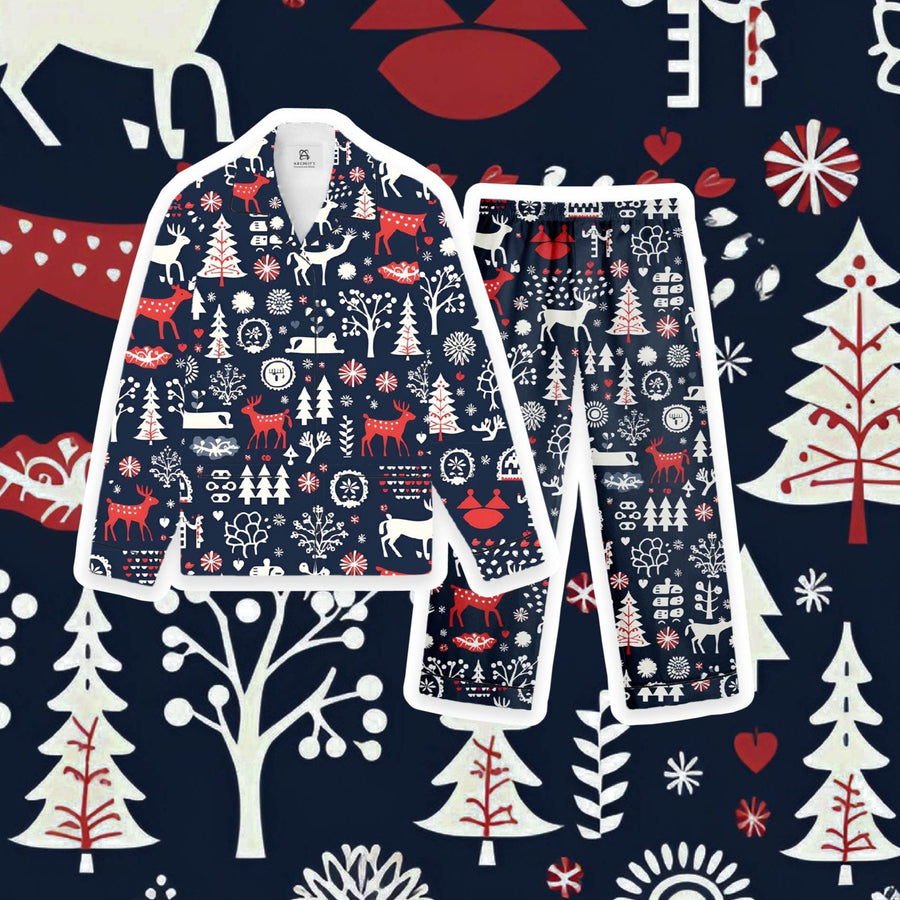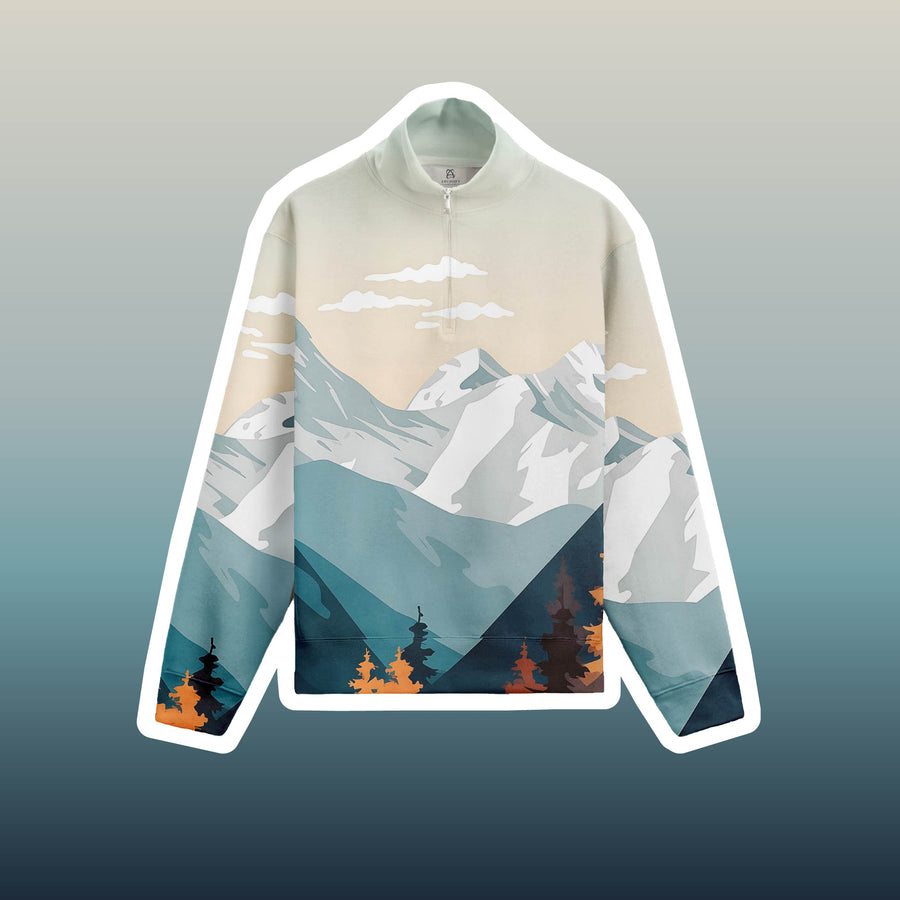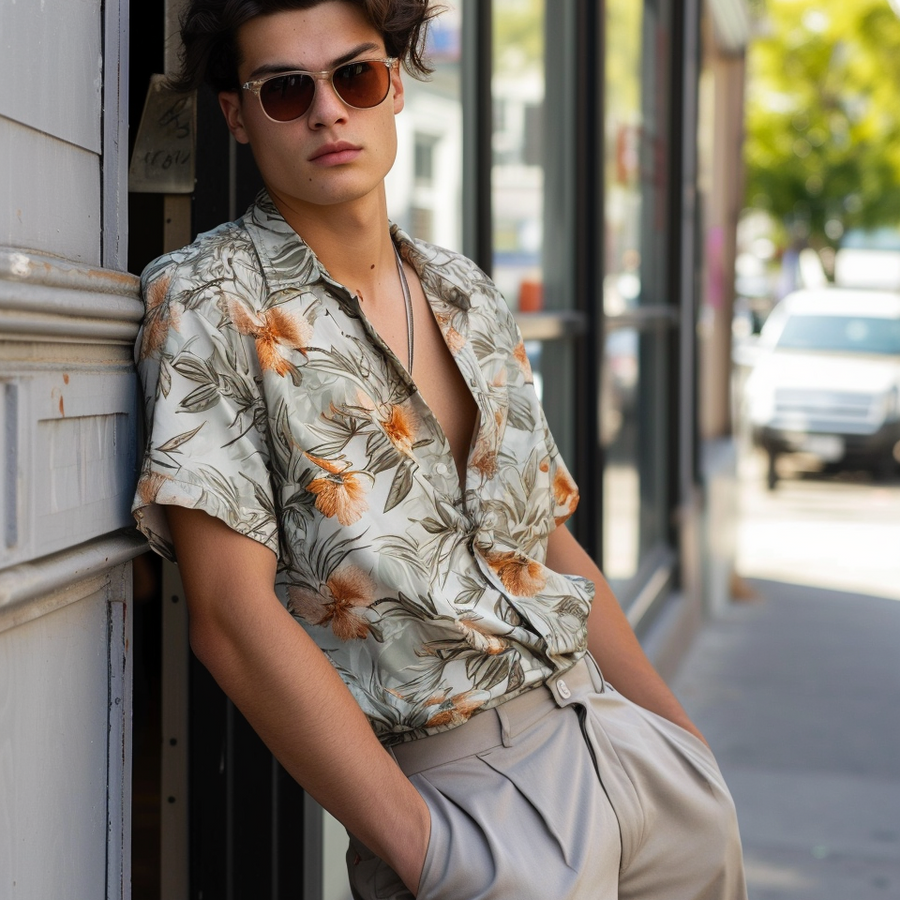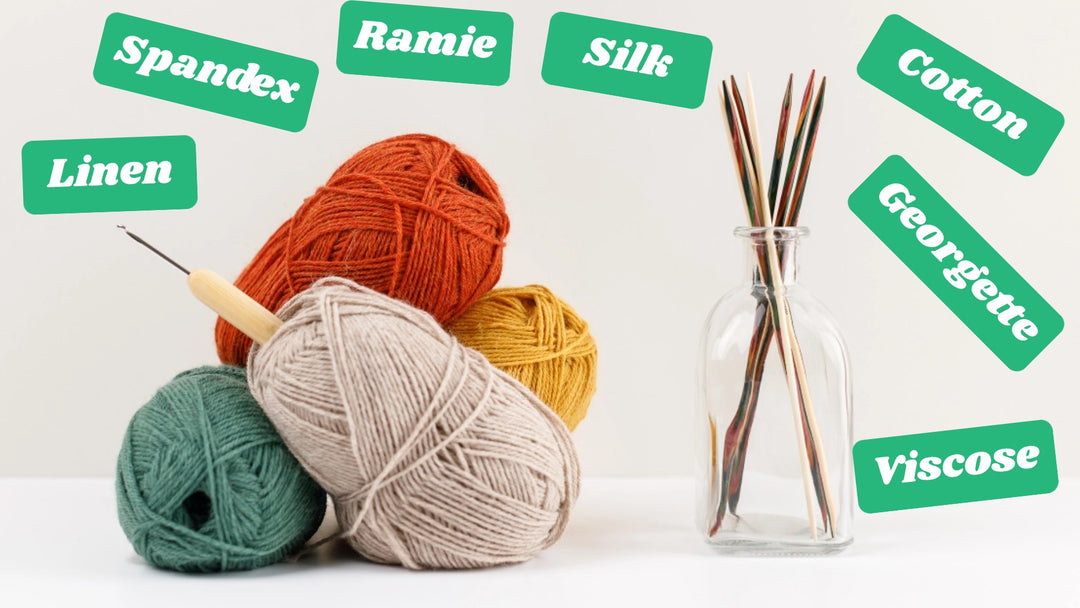How to Wash and Care for Different Types of Fabrics

I don't know if you care about garment fabric composition when you buy clothes. Will you cautiously look through the wash label? Understanding the fabric composition is also convenient for washing and caring for clothes. Today we will give you a wave of common clothing fabrics, have a concept of fabrics, understand the different types of fabrics, know the different ways to wash and care to keep it in the best condition. Here are some common fabrics and their washing and care guidelines.
Cotton
Cotton fabric is soft and comfortable, cotton fiber is delicate, soft to the touch, comfortable to wear, not easy to cause skin allergies. It also has good breathability, which allows air to circulate and keep you dry. Cotton is highly absorbent, can absorb 23 times its own weight of water, can quickly absorb sweat, so that the skin stays dry. And it has some thermal insulation properties that can provide warmth in colder weather. Cotton fibers are also heat resistant and alkali resistant, suitable for high temperature ironing, available in a variety of detergents to clean. At the same time, cotton is a natural fiber that is environmentally friendly and biodegradable, and will not pollute the environment when discarded. Cotton fiber is easy to dye, and the color fastness after dyeing is high, not easy to fade, so many printed garments will choose cotton fabrics.
Despite the many advantages of cotton fabrics, there are also some disadvantages, such as easy to wrinkle, shrinkage and easy to be eroded by mold. In daily use, special attention needs to be paid to washing and maintenance.
Washing and care:
- Machine wash: most cotton fabrics can be machine washed in warm water.
- Bleaching: Bleach can be used on white cotton fabrics, but avoid it on colored cotton fabrics.
- Drying: Machine dryable, but to prevent shrinkage, low temperature drying or natural drying is recommended.
- Ironing: Iron at high temperature for best results.
Silk
Silk has a smooth, soft texture and is extremely delicate to the touch, making it very comfortable to wear and less likely to cause skin irritation. It has a natural pearl-like luster, a noble and elegant appearance, and full of bright colors. Silk has excellent breathability, allowing air to circulate freely and keep you dry. At the same time, it has a high degree of moisture absorption, able to absorb 30% of its own weight of water, so that the skin stays dry and reduce the discomfort caused by sweating. Silk also has good thermoregulation properties, warm in winter and cool in summer, suitable for year-round wear. As a result of better conductivity, silk is not easy to produce static electricity, wearing does not have a sense of static electricity. Although the silk fiber is delicate and soft, but its fiber strength is high, not easy to break, with a certain degree of durability. The light texture of silk when wearing hardly feel the weight, bringing great comfort. In addition, silk fabric has a certain anti-wrinkle properties, not easy to wrinkle, to keep the clothes flat and beautiful. Silk also contains 18 kinds of amino acids, close to the composition of human skin, the skin has a good affinity, has a certain skin care effect. Although silk has many advantages, but its shortcomings should not be ignored. For example, silk is more sensitive to light and heat, and is prone to fading and becoming brittle. In addition, silk is delicate and requires special care in washing and caring.
Washing and care:
- Hand wash: Hand wash in cold water with a neutral detergent and avoid rubbing.
- Dry clean: Most silk fabrics are suitable for dry cleaning.
- Drying: Do not wring, lay flat to dry, avoid direct sunlight.
- Ironing: Iron at a low temperature, it is recommended to iron with a cloth.
Linen
Linen has good breathability and moisture absorption, which can quickly absorb and distribute moisture, making it an ideal fabric for summer. Its fibers are hard, fresh and cool to the touch, wearing a natural cool feeling. Linen fibers are strong, stronger and more durable than cotton fibers, not easy to tear or wear. Linen fabric has a smooth surface, a natural luster, unique texture, suitable for the production of high-end clothing and home textiles. Linen also has antibacterial, anti-mold and anti-static properties, which helps to keep the fabric hygienic and clean. Although linen has many advantages, but it is easy to wrinkle, the need for frequent ironing to maintain neatness. Due to the absorbency and breathability of linen fibers, linen fabrics also dry faster. In addition, linen is a natural fiber, environmentally friendly, biodegradable, in line with environmental requirements. The color and luster of linen fabrics will also become softer and more beautiful over time and with frequent use.
Washing and care:
- Machine wash: machine wash in warm water, avoid using bleach.
- Drying: machine dry at low temperature or dry naturally to prevent the fabric from becoming hard.
- Ironing: Iron at high temperature, best when the fabric is slightly wet.
Ramie
Ramie fibers are strong and more durable than other natural fibers, and are less prone to tearing and abrasion, making them suitable for making high-strength fabrics. Ramie has excellent hygroscopicity and breathability, and can quickly absorb and dissipate moisture, making it cool and dry to wear. Ramie fiber has a smooth surface and a fresh handfeel, and it is not easy to adhere to dust, keeping it clean. Its natural antimicrobial and anti-mold properties help to inhibit the growth of bacteria and mold, keeping the fabric hygienic. Ramie has good UV resistance and can block some UV rays to protect the skin. Due to the stiffness of Ramie fibers, the fabric is prone to wrinkles and needs to be ironed frequently to maintain neatness. Ramie has a natural luster and unique texture, making it suitable for high-end clothing and home textiles. In addition, Ramie is an eco-friendly fiber that is biodegradable and friendly to the environment. Its durability and natural characteristics make Ramie an ideal eco-friendly textile material.


Washing:
- Hand/Machine Wash: Hand or machine wash in cold or lukewarm water.
- Drying: Avoid high temperature drying, natural drying works best.
- Ironing: high temperature ironing, slightly wet when the effect is better.
Viscose
Viscose has a soft, smooth texture, similar to silk, and is very comfortable to wear. It is particularly suitable for summer clothing as it has excellent breathability and moisture absorption, absorbing and dispersing moisture quickly to keep the skin dry. Rayon has a good drape and drape, making clothes look elegant and generous, often used in the production of dresses, shirts and pajamas. It is easy to dye, and produces vibrant, long-lasting colors. Despite its softness, rayon has high fiber strength and good durability. However, rayon is sensitive to moisture and friction, and tends to become brittle when wet, so special care is needed when washing and caring for it. It is recommended that it be hand-washed in cold water and avoided wringing. Rayon has good anti-static properties and is not prone to static electricity when worn. Its light texture, comfortable to wear, good breathability and drape make it a popular textile material.

Washing and Care:
- Hand wash: hand wash in cold water with neutral detergent, rub gently.
- Drying: Lay flat to dry, avoid wringing.
- Ironing: Iron on low temperature.
Spandex
Spandex, also known as elastic fabric, is a synthetic fiber with extremely high elasticity. It has excellent elasticity, can be stretched to several times its original length without deformation, and has good recovery properties and is not easy to slacken or deform, so it is widely used in garments that require a high degree of elasticity, such as sportswear, swimwear, tights and socks. Spandex has good abrasion resistance and can withstand frequent stretching and abrasion, and has a long service life. Spandex fabrics are lightweight and soft, and fit comfortably without binding, making them suitable for intimate apparel. Spandex also has good wrinkle resistance, clothing is not easy to wrinkle, keep neat and beautiful. Due to its chemical structure, spandex has poor heat and chemical resistance and should be avoided in high temperature environments and with strong alkaline or acidic detergents. Although spandex is not usually used on its own, it can be blended with other fibers to significantly improve the elasticity and comfort of the fabric. Spandex fabrics are easy to care for and can usually be machine washed and dried at low temperatures, but it is recommended that high temperatures and strong stretching be avoided in order to prolong their life.
Wash care:
- Hand/machine wash: hand or machine wash in cold water.
- Drying: Avoid high temperature drying, air dry naturally.
- Ironing: generally do not need to iron, if you need to iron, low temperature can be.
Georgette
Georgette is a lightweight, breathable fabric with a silky soft texture and subtle wrinkles, giving it an elegant, airy feel. Usually made of silk, polyester or rayon, georgette has a slightly rough surface but a soft hand with good drape and flow. Its lightweight texture makes it ideal for dresses, skirts, scarves and other garments that require a soft effect. Georgette has good breathability and moisture-wicking properties, making it very comfortable to wear and especially suitable for summer use. In addition, georgette yarn is easy to dye, allowing for rich colors and patterns, but its fine fibers require careful care to prevent hooking or tearing. In terms of washing and care, georgette is usually recommended to be hand-washed, gently washed with cold water and neutral detergent, and then laid flat to dry, avoiding wringing and direct sunlight to maintain its softness and form. When ironing at low temperatures, it is recommended to place a cloth over the fabric to prevent heat damage. The unique texture and elegant look of georgette makes it ideal for making high fashion and decorative items.


Wash care:
- Hand wash: hand wash with cold water and neutral detergent.
- Drying: Lay flat to dry, avoid direct sunlight.
- Ironing: Iron at low temperature with a piece of cloth.
Polyester:
Polyester is a very versatile synthetic fiber with many distinguishing characteristics that have made it popular in the modern textile industry. Polyester is extremely durable, with a strong fabric that does not tear, fray, or warp easily, which makes polyester fabrics especially suitable for clothing and home furnishings that require extended use. It has excellent wrinkle resistance and does not wrinkle noticeably after washing, keeping clothes flat and beautiful and reducing the need for ironing. Polyester is also highly resistant to fading and is able to maintain the vibrancy of its colors after many washes. Polyester fabric has low moisture absorption and dries quickly, making it suitable for quick-drying sportswear and travel apparel, among other things. It has good elasticity and recovery, clothing is not easily deformed or loose, comfortable to wear and retains its shape. Polyester has good heat resistance and can withstand moderate temperatures, but high temperature ironing or contact with heat sources should be avoided. Although polyester is not as breathable as natural fibers, modern technology has improved the breathability of polyester for comfort. Polyester is an eco-friendly fiber that can be recycled, helping to reduce its environmental impact. Overall, polyester is a well-rounded fiber material that combines durability, ease of care, and cost-effectiveness, and is widely used in a variety of applications, including apparel, home textiles, and outdoor gear.
Washing and Care:
- Machine wash: machine wash in warm water, avoid high temperatures.
- Drying: Machine dry at low temperature or air dry naturally.
- Ironing: Medium temperature ironing.
Modal
Modal is a high-grade, recycled cellulose fiber with many excellent characteristics that make it a popular fabric choice. Made from natural wood pulp, Modal fibers are widely used in fashion apparel, lingerie and home furnishings for their superior performance and comfort.
Modal has a soft, silky feel and is very comfortable to wear, making it suitable for intimate apparel. It is very breathable and can effectively wick away sweat and heat to keep the skin dry, making it ideal for summer clothing and sportswear. Modal has excellent moisture wicking properties and absorbs moisture better than cotton, wicking away sweat quickly to prevent moisture and odor. Its moisture-wicking properties make modal fabrics often used to make comfortable pajamas, underwear and sportswear. This fabric has excellent drape and a natural drape that allows clothing to display elegant lines and flow. Modal is very wrinkle-resistant and does not wrinkle easily, reducing the need for ironing and keeping clothes flat and beautiful. In addition, the color of modal fabrics is bright and not easy to fade, withstand multiple washings, long-term use can still maintain the brightness of the color and the softness of the fabric.

Washing care:
- Machine wash: machine wash in cold or warm water.
- Drying: Machine dry at low temperature or air dry naturally.
- Ironing: Medium temperature ironing.
Knowing the characteristics of these fabrics and how to wash and care for them can help you take better care of your clothes and extend their life. Always check the care instructions on the clothing label before washing to ensure you are using the correct method.













